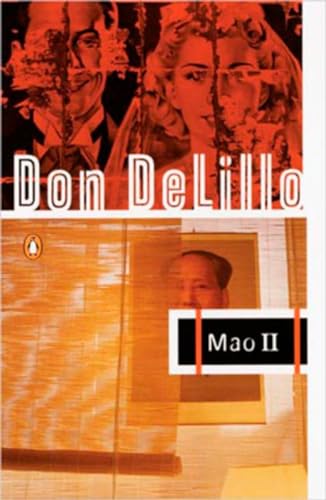When I think back on my reading life to date, there are maybe a couple dozen writers who stand out from the rest as the true friends of my mind: Woolf, Bellow, Proust, Dostoevsky…And the weird thing is that none of these—well, none except the poets—were love at first sight. I remember staring blankly at the first page of DeLillo’s Mao II at 15, when I still believed I was a poet myself. I remember struggling with the Constance Garnett version of The Brothers Karamazov by our apartment-complex pool the summer after freshman year of college, before switching translations and falling into it utterly. And I remember (this is embarrassing) tripping over the sprung rhythms of the opening of Augie March and being like, this is what all the fuss is about?

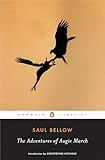

 The experience of suddenly gaining new ears for an author is one I can perhaps best compare to the effortless French fluency I sometimes achieve in dreams. Or to the way Douglas Adams described the workings of the Babelfish in A Hitchhiker’s Guide to the Galaxy. One minute, I’m bumbling along with furrowed brow, nodding in feigned comprehension, Oui, bien sûr, the beach is which way again?; the next minute, the barriers melt and I’m immersed in a clear sea.
The experience of suddenly gaining new ears for an author is one I can perhaps best compare to the effortless French fluency I sometimes achieve in dreams. Or to the way Douglas Adams described the workings of the Babelfish in A Hitchhiker’s Guide to the Galaxy. One minute, I’m bumbling along with furrowed brow, nodding in feigned comprehension, Oui, bien sûr, the beach is which way again?; the next minute, the barriers melt and I’m immersed in a clear sea.


 And this is the experience I had this year with the late Canadian genius Mavis Gallant—which is odd, because I already liked Mavis Gallant. In fact, I recommended her anthology Paris Stories in this space a couple years back. Some time in June, frustrated with much of the new fiction I was reading, I picked up the companion volume Varieties of Exile, confident that I at least knew what I was getting: a certain standard of craftsmanship. What I found instead was rapture. In the wry, daring, tender, and ruthless prose of stories like “The Chosen Husband” and “The Concert Party,” I was suddenly hearing secret harmonies. How many such stories had Gallant published in her lifetime? I decided I had to read them all, post-haste.
And this is the experience I had this year with the late Canadian genius Mavis Gallant—which is odd, because I already liked Mavis Gallant. In fact, I recommended her anthology Paris Stories in this space a couple years back. Some time in June, frustrated with much of the new fiction I was reading, I picked up the companion volume Varieties of Exile, confident that I at least knew what I was getting: a certain standard of craftsmanship. What I found instead was rapture. In the wry, daring, tender, and ruthless prose of stories like “The Chosen Husband” and “The Concert Party,” I was suddenly hearing secret harmonies. How many such stories had Gallant published in her lifetime? I decided I had to read them all, post-haste.
I turned to her Collected Stories, an 850-page feast recently reissued by Everyman’s Library. Starting with the pieces published in The New Yorker around what seemed her annus mirabilis, 1979, I read my way forward and backward with growing astonishment: “In The Tunnel,” “The Pegnitz Junction,” “An Alien Flower,” “Potter”… the stories only got deeper, richer, funnier, sadder. I limited myself to one a day, so that each would have time to steep in the back of my brain; soon, my daily hour with Mavis Gallant became the thing I most looked forward to. From “The Remission,” possibly the greatest of Gallant’s stories:
“When it became clear that Alec Webb was far more ill than anyone had cared to tell him, he tore up his English life and came down to die on the Riviera. The time was early in the reign of the new Elizabeth, and people were still doing this—migrating with no other purpose than the hope of a merciful sky.”
Collected Stories was the best book I read all year—one of the best works of fiction I’ve ever read—and as the remaining pages dwindled, I began to feel the sadness of impending loss; never again, barring amnesia, would I get to read these stories for the first time. Happily, Collected Stories turns out to be a wild misnomer; by July, I’d found an equal number of Gallant’s masterpieces lurking in unconscionably obscure volumes like My Heart Is Broken, Home Truths, and The Other Paris; on microfilm at the NYPL; and in the anthology of “uncollected work” The Cost of Living. Nearing now the true end of the Gallant oeuvre, I felt as if certain engines of perception had been restored to their factory settings; even books plucked from the New Release shelf at the bookstore carried a Gallant-like charge of clarity and depth. Or perhaps, afraid to break the spell, I began choosing them more carefully.








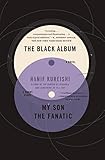


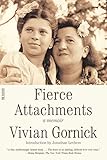
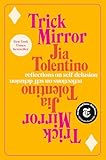

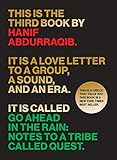

 I found myself loving, for example, Max Porter’s short novel Lanny, with its tender English domesticity and bursts of wild, magic-realist collage. And Amit Chaudhuri’s Friend of My Youth, an easygoing autofiction of Mumbai life that stealthily opens into something deeper (like all of Chaudhuri, really). And Sergio De La Pava’s Lost Empress, the daft and incendiary follow-up to A Naked Singularity, centering on mass incarceration, Joni Mitchell, and an off-brand football team called the Paterson Pork. I loved, at length and for the record, Ben Lerner’s third novel, The Topeka School. And much of Ocean Vuong’s debut, On Earth We’re Briefly Gorgeous.
I found myself loving, for example, Max Porter’s short novel Lanny, with its tender English domesticity and bursts of wild, magic-realist collage. And Amit Chaudhuri’s Friend of My Youth, an easygoing autofiction of Mumbai life that stealthily opens into something deeper (like all of Chaudhuri, really). And Sergio De La Pava’s Lost Empress, the daft and incendiary follow-up to A Naked Singularity, centering on mass incarceration, Joni Mitchell, and an off-brand football team called the Paterson Pork. I loved, at length and for the record, Ben Lerner’s third novel, The Topeka School. And much of Ocean Vuong’s debut, On Earth We’re Briefly Gorgeous.
Cautiously, I turned this polyamorousess, or mania, or whatever it was, to some older fiction I’d been meaning to start or finish for a while now. The problems with Martin Amis’s Time’s Arrow are well-documented, and probably inevitable—the whole thing is told backward, for God’s sake—but in my state of generalized receptivity, I found myself marveling more at its eclipsed discoveries (that guilt is the corollary not of sin but of fear; that suicide is impossible in reverse). One could certainly point out problems with Hanif Kureishi’s The Buddha of Suburbia, too—it’s no one’s idea of tightly constructed—but I found the narrator’s lusty openness to happenstance so vital and persuasive and charming that I went ahead and read The Black Album, too. Charmed isn’t quite the right word for what I felt about Karl Ove Knausgaard’s A Time for Everything; its longeurs put even My Struggle to shame. But having set it aside a couple years ago, I now pushed on to one of the strangest and most indelible conclusions in literature.
It is only by comparison with Knausgaard that Vivian Gornick’s intense memoir Fierce Attachments can be called a palate-cleanser—it will haunt you, too. But this is a flawless piece of writing, born of a kind of intoxicating New York astringency I associate with Renata Adler, Elizabeth Hardwick, and Paula Fox. (What a pleasure it would be to teach a class on these four writers.)



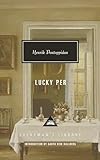






 I should say, in the interest of accuracy, that all was not totally hopeless before my Summer of Mavis Gallant, though the best books I read in the first part of 2019 were mostly classics, consecrated by time, or satellite works orbiting around them. Some years ago, a publisher from the Netherlands gave me a list of her country’s greatest novelists, and this spring I finally got aroud to reading Max Havelaar by Multatuli (a.k.a. Eduard Douwes Dekker). I had thought of it as a proto-muckracking work about the evils of the 19th-century coffee trade—the thing it’s famous for—but Multatuli is also an extraordinary writer and literary architect, hurling thunderbolts of satirical and polyphonic prose, as much Sergio De La Pava as Ida B. Wells. Encouraged, I decided to try W.F. Hermans as well, mainly because his just-translated war novella An Untouched House, from 1951, was shorter than Gerhard Reve’s The Evenings. I was pleasantly surprised to find Hermans’s writing beautiful and devastating as well as misanthropically furious—the thing he‘s famous for.
I should say, in the interest of accuracy, that all was not totally hopeless before my Summer of Mavis Gallant, though the best books I read in the first part of 2019 were mostly classics, consecrated by time, or satellite works orbiting around them. Some years ago, a publisher from the Netherlands gave me a list of her country’s greatest novelists, and this spring I finally got aroud to reading Max Havelaar by Multatuli (a.k.a. Eduard Douwes Dekker). I had thought of it as a proto-muckracking work about the evils of the 19th-century coffee trade—the thing it’s famous for—but Multatuli is also an extraordinary writer and literary architect, hurling thunderbolts of satirical and polyphonic prose, as much Sergio De La Pava as Ida B. Wells. Encouraged, I decided to try W.F. Hermans as well, mainly because his just-translated war novella An Untouched House, from 1951, was shorter than Gerhard Reve’s The Evenings. I was pleasantly surprised to find Hermans’s writing beautiful and devastating as well as misanthropically furious—the thing he‘s famous for.
And then, wrapping up an introduction to Henrik Pontoppidan’s Lucky Per, I picked up Niels Lhyne, by Pontoppidan’s fellow Dane and rough contemporary Jens Peter Jacobsen. The fact that I’d been barely aware of it seems insane to me now, both because Niels Lhyne forced a reassessment of my maps and calendars of literary modernism and because of the insane beauty of Jacobsen’s sentences (in Tiina Nunally’s exquisite translation.) Wanting to know more, I read the young critic Morton Høi Jensen’s 2017 book on Jacobsen, A Difficult Death, and found it a wonderful tutorial, in the vein of Janet Malcolm’s book on Chekhov. This reminded me in turn of how much I love the genre of popular criticism, and sent me toward David Bellos’s The Novel of the Century: The Extraordinary Adventure of Les Misérables—far more worth your time than the borderline-unwatchable BBC remake of Les Mis with Phil Collins’s daughter and McNulty from The Wire.
This was a wonderful year for new criticism as well (shout-out to James Wood’s essay on Pontoppidan, and to Patricia Lockwood’s incandescent rereading of Updike in the LRB). I’ll admit to having lumped Jia Tolentino’s New Yorker pieces in with some of the more fleeting hot takes that seem to have crept into that magazine via its website. But in August, as I traveled up to Maine for vacation, a friend urged me to give Tolentino’s Trick Mirror a chance, starting with the essay on ecstasy. I’m grateful for the advice. Tolentino’s decision to write nine original pieces for this book, rather than recycling from the magazine, is a sign of courageous seriousness—and serious courage. Moreover, Tolentino is a gifted memoirist and a brilliant reader, and her take on our digitally damaged culture, however warmly felt, is also about as definitive as we’re likely to get at present. I found a similar balance of thinking and feeling in the criticism of the poet Hanif Abdurraqib, which I’d started reading a few months earlier. There are some gems tucked into the gallimaufry They Can’t Kill Us Until They Kill Us, but his book-length essay on A Tribe Called Quest, Go Ahead in the Rain, seems to push the whole genre of music writing forward.
Of the narrative nonfiction I read this year, only Say Nothing, Patrick Radden Keefe’s tremendous account of Ireland’s Troubles, counts as new, strictly speaking. But the lowercase troubles depicted in Jill Leovy’s Ghettoside, Matthew Desmond’s Evicted, and Katherine Boo’s Behind the Beautiful Forevers remain urgent news, and I’d recommend any of these without reservation, not least for the effortless way they smuggle analysis into their storytelling. I’d also put in a plug for Jeff Chang’s Can’t Stop Won’t Stop, neither narrative nor criticism, exactly, but all in all the Lipstick Traces of hip-hop.
Back to Mavis Gallant, though, through whom my whole year in reading flowed. I finished the last unread piece of her writing, the novel Green Water, Green Sky, on the first day of that vacation in Maine. For an encore, I went with a friend to the nearby house of Marguerite Yourcenar, whom Gallant had praised in her wonderful essay “Limpid Pessimist.” Yourcenar’s Memoirs of Hadrian had been stalled out for years now in the lower hundreds of my to-read list, but the experience of walking through her study, browsing her bookshelves, and of Gallant’s beneficent influence on my reading more generally, meant that I would give it another look. I found it as advertised: a singular masterpiece, an almost spooky inhabitation of the Roman imagination.
And then I turned to The Bluest Eye, in memory of Toni Morrison, one of the very first friends of my mind, whose writing had in a very real sense, made a novelist of me. It had been years since I’d read her, and I felt a little trepidation. How real were they, really, these ecstasies and deep sympathies? Was it possible they were just figments of my own imagination, like my ability to speak flawless French? Or of someone else’s, like the Babelfish? Or something in between?
“Nuns go by as quiet as lust, and drunken men and sober eyes sing in the lobby of the Greek hotel. Rosemary Villanucci, our next-door fried who lives above her father’s café, sits in a 1939 Buck eating bread and butter.”
Nope. I can’t begin to understand, much less explain, what these lines do to me, but as we turn the collective page into 2020, I feel certain it doesn’t get any realer than that.
More from A Year in Reading 2019
Don’t miss: A Year in Reading 2018, 2017, 2016, 2015, 2014, 2013, 2012, 2011, 2010, 2009, 2008, 2007, 2006, 2005
